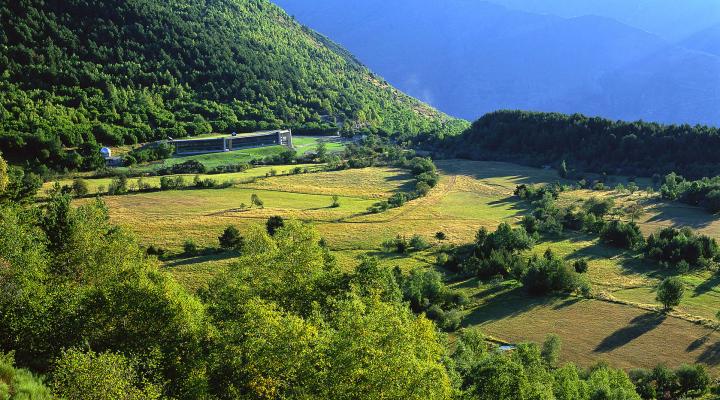
Session at MónNatura Pirineus
The session
This weekend session takes a look at:
- Identification of flora and fauna of the Pyrenees.
- Collection of biological samples in the field and analysis in the laboratory.
- Nocturnal wildlife observation.
- Reintroduction of species.
In this weekend session you immerse yourself fully in the world of nature conservation in a privileged natural environment in the middle of the Valls d'Àneu, in the Pallars Sobirà, in the MónNatura Pirineus centre. You put yourself in the shoes of the expert studying, observing and identifying the fauna, flora and microorganisms of the Pyrenees through fieldwork, the collection of biological samples and their analysis in the laboratory. You also look at and identify the nocturnal wildlife of the area, and study the reintroduction of species, such as the Pyrenean grizzly bear, by implementing the methodology currently used for species monitoring in the field.
Activities
Day: Saturday 21 March 2020
Opening hours: 9 am to 1:30 pm
Location: Route in the surroundings of MónNatura Pirineus
Activity coordination: Anna Planella, Living Landscapes, Laura Force, Lichens of Barcelona and University of Barcelona (UB) and Antonio Gómez, full professor in the Department of Evolutionary Biology, Ecology and Environmental Sciences of the University of Barcelona (UB)
Session given by: Anna Planella, Laura Force and Antonio Gómez
Language: Catalan
Description: Observation and collection of samples from higher plants, collection of photo-trapping cameras, definition of habitats and transects of wildlife trails in the Pyrenees. Identification and study of lichens: morphology and ecology, species identification and sample collection
Day: Saturday 21 March 2020
Opening hours: 3 pm to 6 pm
Location: Computer rooms and laboratory of MónNatura Pirineus
Activity coordination: Anna Planella, Living Landscapes, Laura Force, Lichens of Barcelona and University of Barcelona (UB) and Antonio Gómez, full professor in the Department of Evolutionary Biology, Ecology and Environmental Sciences of the University of Barcelona (UB)
Session given by: Anna Planella, Laura Force and Antonio Gómez
Language: Catalan
Description: Session in the computer room and in the laboratory to analyse the samples obtained in the field that deal with the following issues related to biodiversity and conservation:
- Image analysis of the photo-trapping cameras
- Digitisation of habitats with Geographic Information Systems (GIS)
- Identification of collected plants and elaboration of a small herbarium
- Analysis of trace transects with Geographic Information Systems (GIS)
- Observation of lichens under binocular lens. Preparation of slices and microscopic preparations for the introduction and study of basic structures
- Performing some colour reactions in the lichens according to the identification keys
- Study of lichens as bioindicators and study of lichenometry
Day: Saturday 21 March 2020
Opening hours: 9 pm to 10:30 pm
Location: Route in the surroundings of MónNatura Pirineus
Activity coordination: Environmental education team of MónNatura Pirineus
Session given by: Environmental education team of MónNatura Pirineus
Language: Catalan
Description: Outing to discover the nocturnal animals of MónNatura Pirineus. Exploring the differences between wildlife surveys at night as opposed to field trips in the morning. Use of parabolic dishes to detect the sounds emitted by animals and lots for the observation of different organisms
Day: Sunday 22 March 2020
Opening hours: 9 am to 1:30 pm
Location: MónNatura Pirineus Classrooms and around the centre
Activity coordination: Toni Batet and Jordi Guillén, coordination of the PirosLIFE Catalunya project.
Session given by:Toni Batet and Jordi Guillén
Language: Catalan
Description: Presentation of the PirosLIFE project to reintroduce the brown bear. Study of the implications of the project for the monitoring of the species, preventive measures being carried out in Catalonia to minimise the damage caused by the bear and the characteristics of the species. Fieldwork itinerary to see on-field the methodology used for species monitoring, installation of hair traps and photo-trapping cameras
